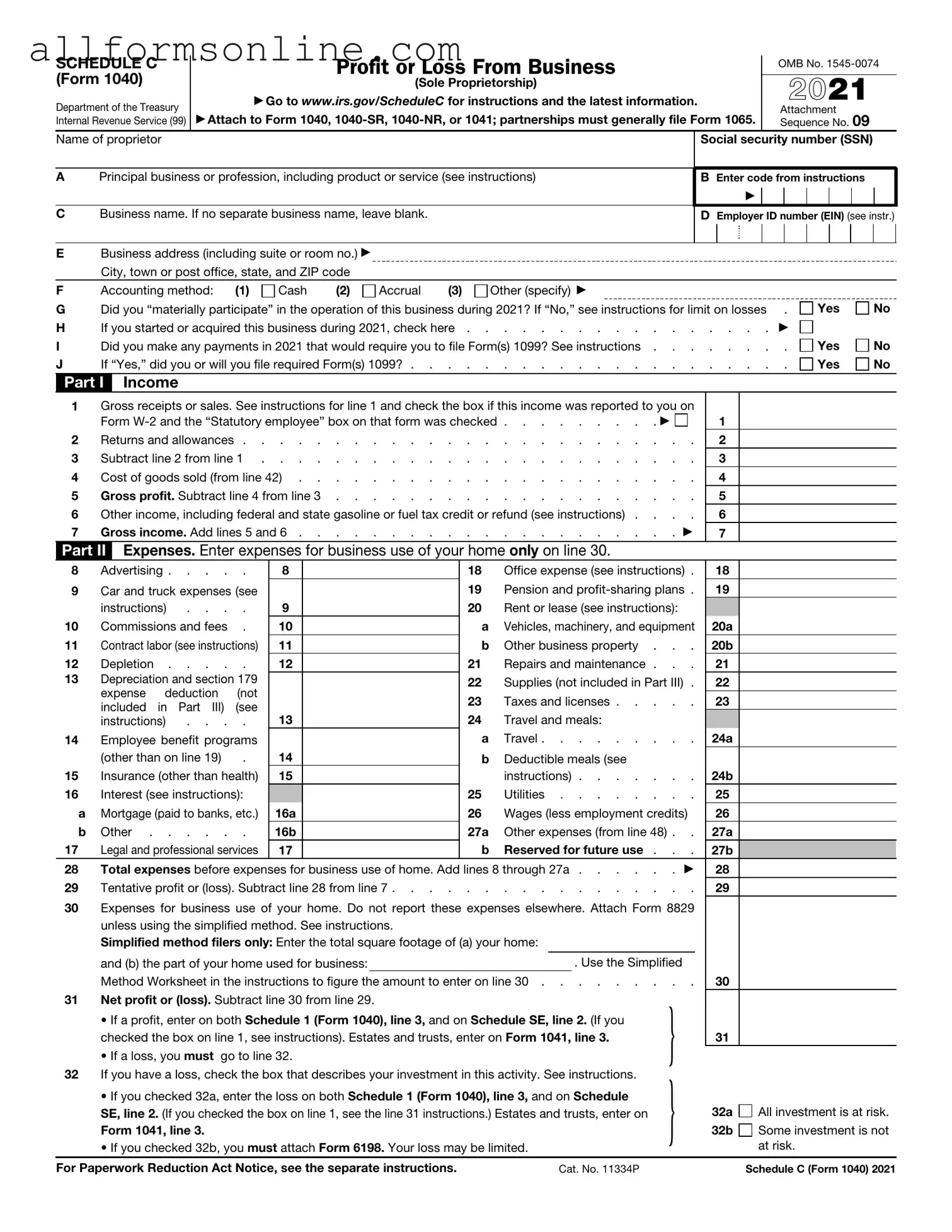What is IRS Schedule C?
IRS Schedule C is a form used by sole proprietors to report income or loss from their business. It is part of the individual income tax return, Form 1040. This form allows business owners to detail their earnings, expenses, and ultimately determine their taxable income from self-employment activities.
Who needs to file Schedule C?
If you are a sole proprietor or a single-member LLC, you must file Schedule C if you have income from your business. This includes any money earned from freelance work, side gigs, or any other self-employment activities. If your business expenses exceed your income, you can still file Schedule C to report the loss.
What information do I need to complete Schedule C?
To fill out Schedule C, gather information about your business income and expenses. This includes sales receipts, invoices, bank statements, and records of any expenses such as supplies, advertising, and travel costs. You will also need your business name, address, and the type of business you operate.
How do I report income on Schedule C?
Report your total income on Line 1 of Schedule C. This includes all money received from sales or services before any expenses are deducted. If you received any 1099 forms from clients, use those amounts to help calculate your total income.
What types of expenses can I deduct on Schedule C?
You can deduct a variety of business expenses on Schedule C, including costs for supplies, rent, utilities, and travel. Other deductible expenses may include advertising, professional fees, and vehicle expenses if you use your car for business purposes. Keep in mind that personal expenses are not deductible.
What is the difference between a sole proprietorship and an LLC?
A sole proprietorship is the simplest form of business structure, where one individual owns and operates the business. An LLC, or Limited Liability Company, offers personal liability protection to its owners while still allowing them to report income on Schedule C. Both structures may use Schedule C, but LLCs often have more formal requirements.
Can I file Schedule C electronically?
Yes, you can file Schedule C electronically using tax software or through a tax professional. Many tax preparation programs automatically include Schedule C when you indicate that you have self-employment income. Electronic filing can speed up the process and help ensure accuracy.
What happens if I don’t file Schedule C when required?
If you fail to file Schedule C when required, you may face penalties from the IRS. This could include fines and interest on any unpaid taxes. It's essential to file even if you have a loss, as it can help establish your business for future tax years.
Where can I find Schedule C and instructions for filing?
You can find Schedule C and its instructions on the IRS website. They provide the most up-to-date forms and guidelines. Additionally, many tax preparation software programs include Schedule C, making it easier to complete your tax return accurately.
